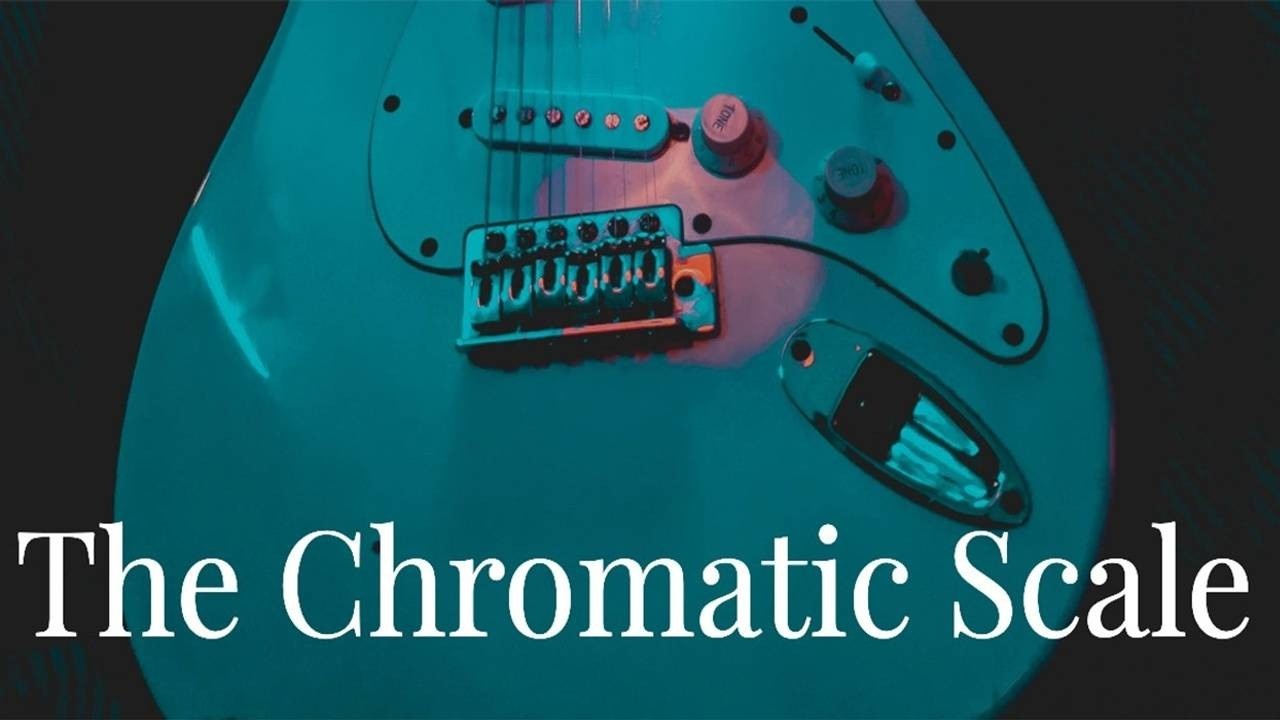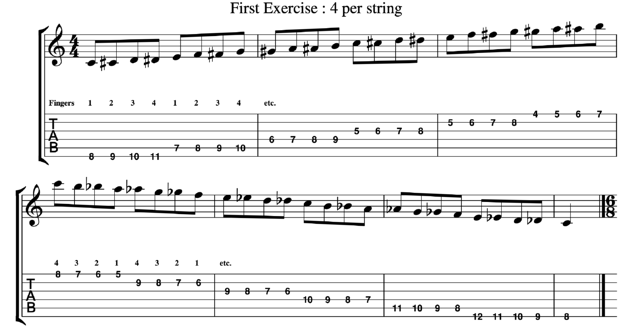
The Chromatic Scale
Jun 08, 2021I often get asked by students: "...I know scales and stuff, but how can I add more chromaticism to my lines? How can I connect everything with half-steps?" My answer is: well, practice the chromatic scale first and all this stuff will soon become available to "glue" your melodic lines together. (Also check out Podcast #4 here...)
What is the Chromatic Scale?
Chroma means color in Greek. This scale encompasses every color (thus every one of the 12 notes available on our Western musical instruments.) The twelve notes, starting on C:
(ascending) C C# D D# E F F# G G# A A# B
(descending) C B Bb A Ab G Gb F E Eb D Db
In fact, the entire scale is easily played on a single guitar string! All you have to do is to play each consecutive frets, up or down. The scope of this article being technical exercises, we'll look at two ways of organizing this scale on the fretboard: vertical and diagonal.
Two Useful Exercises for Jazz Guitar
First exercise: Vertical (almost in position)
This exercise "fits" the chromatic scale in a guitar friendly format: four notes on each string. It has a vertical direction on the fingerboard (similar to position playing) and a two octave range. Play this one in strict alternate picking, picking each new string like this: down - up - down - up.

Second Exercise: Diagonal (more notes per string)
This exercise is harder than the previous one: it has six notes on each string. Play it one in strict alternate picking. Its direction is diagonal thus spawning on three octaves. Look up this diagonal playing article if you need more info. Make sure your two external fingers (index and pinky aka 1 and 4) cover two notes each! The fingering pattern is the same on each string:
index stretch - index - middle - ring - pinky - pinky slide
... or ...
1 (stretch) - 1 - 2 - 3 - 4 - 4 (stretch)

More to do ...
- Use a metronome (start slow and make every note EVEN!)
- Work on different accent patterns.
Here's the "4 per string" version played in groups of three notes (accents are sounded with the pick):

Here's the "6 per string" played in in 4/4 (real nice!):

- Reverse the picking (starting each new string with an upstroke)
- Start any/both exercises with a "pick up" on the "and of 3":

This process is described in a great book titled Forward Motion. Check it out!
Finally, you can learn more about chromaticism in greater detail in this YouTube vlog and in this overview of jazz theory. See below!
Thanks. Please let me know if you have further questions in the comments below :)
**Notes from the editor**(This post was updated 04/22/2021. (Images updated and layout adjustments)










